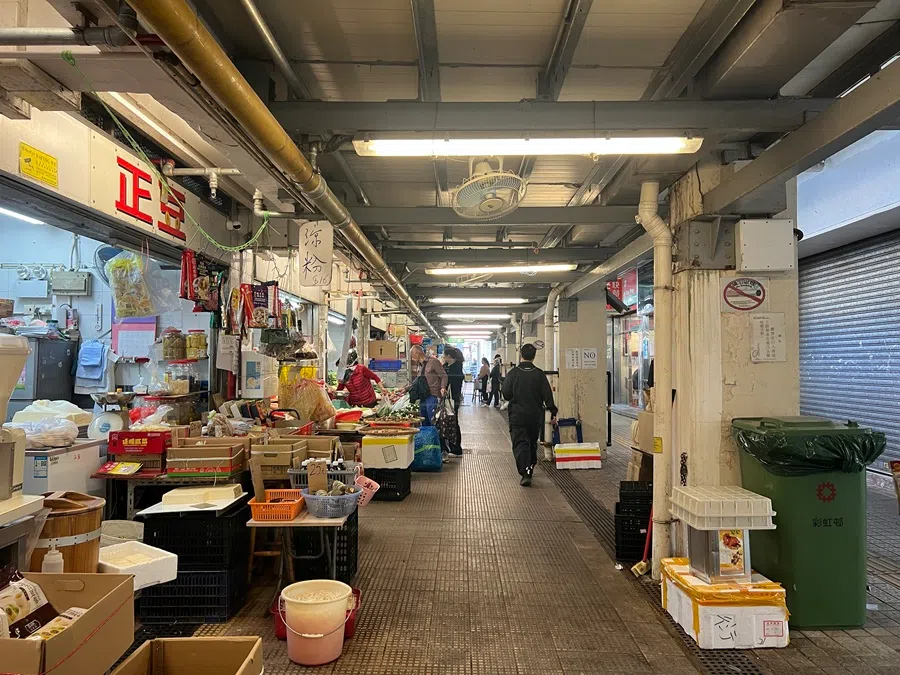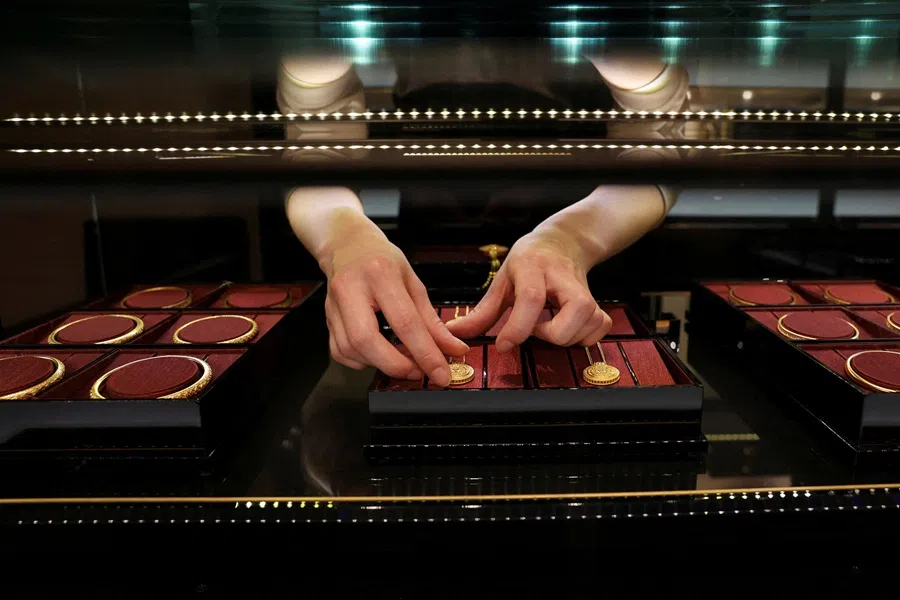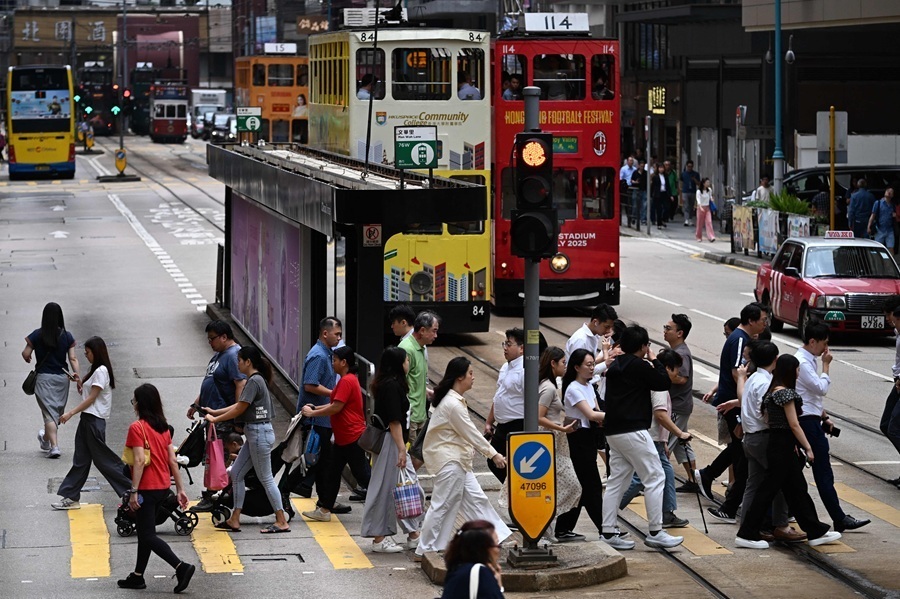From outdated to unstoppable: The rise of mainland brands in Hong Kong
Compared with the overall leap in quality of mainland Chinese domestic products, Hong Kong brands have in the past few years appeared traditional and rigid, with dated reputes. Lianhe Zaobao journalist Tai Hing Shing takes a look at the appeal of mainland Chinese brands to Hong Kongers.

Last month, Chinese mobile phone brand Honor opened its second global flagship store in Shenzhen, and their public relations team invited me to the opening event. At first, I considered declining — I’m not usually drawn to tech gadgets like smartphones. But a friend from Hong Kong, a devoted Honor fan, persuaded me to attend with him.
Shift in consumer preference
The Honor flagship store is located in Shenzhen Bay, just a short distance from the Hong Kong border. Spanning two spacious floors, the store showcases a wide range of Honor products and even features robots serving customers — a refreshing contrast to the cookie-cutter mobile phone shops commonly found in Hong Kong.
As soon as we entered the store, my friend immediately began browsing for new products. He found a new release he liked, but it was out of stock. The staff promptly took his contact details and promised to follow up later. On our way back to Hong Kong, he kept praising the service in mainland stores as far superior to that in Hong Kong, and expressed his intent to continue supporting domestic products.
As one of the Four Asian Tigers, Hong Kong was at the forefront of modernisation, supplying many high-quality products to mainland China and filling the gaps in the Chinese market.
In the 1970s, Hong Kong’s economy began to take off, with many local brands sprouting like mushrooms. At that time, China was in the early stages of reform and opening up, facing a shortage of goods domestically. As one of the Four Asian Tigers, Hong Kong was at the forefront of modernisation, supplying many high-quality products to mainland China and filling the gaps in the Chinese market.
For many years, when Hong Kong residents visited family in the mainland, they brought essential items that were scarce there — medicines, small electronics and canned goods. These products became part of the collective memory of a generation, accompanying many mainlanders as they grew up.

The preference for Hong Kong brands among mainland residents peaked around 2010. At that time, the quality of mainland brands was inconsistent, with frequent news of counterfeit products. In comparison, Hong Kong products had a well-established production and regulatory system, and were deemed of quality, safe and innovative, attracting many mainlanders to Hong Kong specifically to shop.
After three years of the Covid-19 pandemic, large numbers of Hongkongers would travel up north to shop on the weekends.
Times have changed, and mainland Chinese brands have risen rapidly and innovated in recent years; Hongkongers are now recognising the quality of mainland products. After three years of the Covid-19 pandemic, large numbers of Hongkongers would travel up north to shop on the weekends.
Working with e-commerce platforms
Hong Kong brands are facing mounting pressure with the rise of mainland brands. In fields such as dining and daily necessities, several mainland brands have entered Hong Kong, gradually penetrating the local consumer market. The most notable example is the Laoganma chilli sauce, which has become a staple condiment in many Hong Kong households in recent years.
Technology is another sector. Hongkongers used to be partial to foreign brand mobile phones, but in recent years, the total market share of Chinese brand mobile phones in Hong Kong has surpassed that of Apple and Samsung. New models from Huawei, Honor and Xiaomi are often snatched up by youths quickly upon release, with stores’ inventory unable to keep up.

The saying “the falling of one leaf heralds autumn” reflects how Chinese mainland factories — which in the past could only manufacture for international brands — have now become manufacturers of domestic brands. An increasing number of domestic products are partnering with emerging e-commerce platforms, expanding from offline to online channels, and strengthening their connection with Hongkongers. These products have gradually supplanted foreign brands, emerging as a new trend within Hong Kong society.
... their total sales during last year’s Singles’ Day in the mainland market were surpassed by a mainland newcomer brand — Laopu Gold.
From daily necessities to luxury items
Hong Kong has always been a popular place for mainland residents to buy luxury goods, with many mainland tourists fond of buying gold accessories from famous Hong Kong gold shops as gifts. These shops used to be crowded during the holidays. Unexpectedly, the well-known Hong Kong gold brands have been caught up by their mainland counterparts in recent years.
Earlier, I dined with a friend who is a manager at a Hong Kong gold shop. He lamented that although global gold prices have surged, benefitting Hong Kong gold shops, their total sales during last year’s Singles’ Day in the mainland market were surpassed by a mainland newcomer brand — Laopu Gold.
I commented, “That’s normal; in business, you win some, you lose some.”
My friend asked, “Do you know how many branches we each have?”
Seeing that I did not have a clue, he continued, “We have hundreds of retail stores in the mainland, while they have only a few dozen branches. This means that they’re outperforming us ten to one. They are wiping the floor with us.”
I was taken aback, and went home to search for information on Laopu Gold. It turns out that this gold shop only opened in 2009, but has performed outstandingly in recent years with explosive profit growth, becoming a legend in the industry.

According to my friend, Laopu Gold — a rising domestic brand from mainland China — has successfully promoted traditional gold craftsmanship, showcasing authentic royal techniques that resonate with younger customers. In comparison, traditional Hong Kong gold shops seem outdated and less appealing.
Laopu Gold also opened branches in Hong Kong, attracting large numbers of visitors daily. Towards the end of September, the shop opened a third branch in Hong Kong, aiming to use the city as a platform to expand overseas.
From dining flavours to tech products and the jewellery industry, mainland Chinese brands are gradually shedding the label of being “old-fashioned”, and are increasingly occupying the core of Hong Kong’s consumer market, gaining the favour of Hongkongers. While this trend reflects the deepening economic and cultural connection between the mainland and Hong Kong, it also unveils the transformation from “made in China” to “Chinese brands”.
Compared with the overall leap in the quality of mainland Chinese domestic products, Hong Kong brands have in the past few years appeared traditional and rigid, with dated reputes. To remain standing and continue to shine in the face of development challenges, Hongkongers would need to double their efforts.
This article was first published in Lianhe Zaobao as “香港品牌的危机”.





